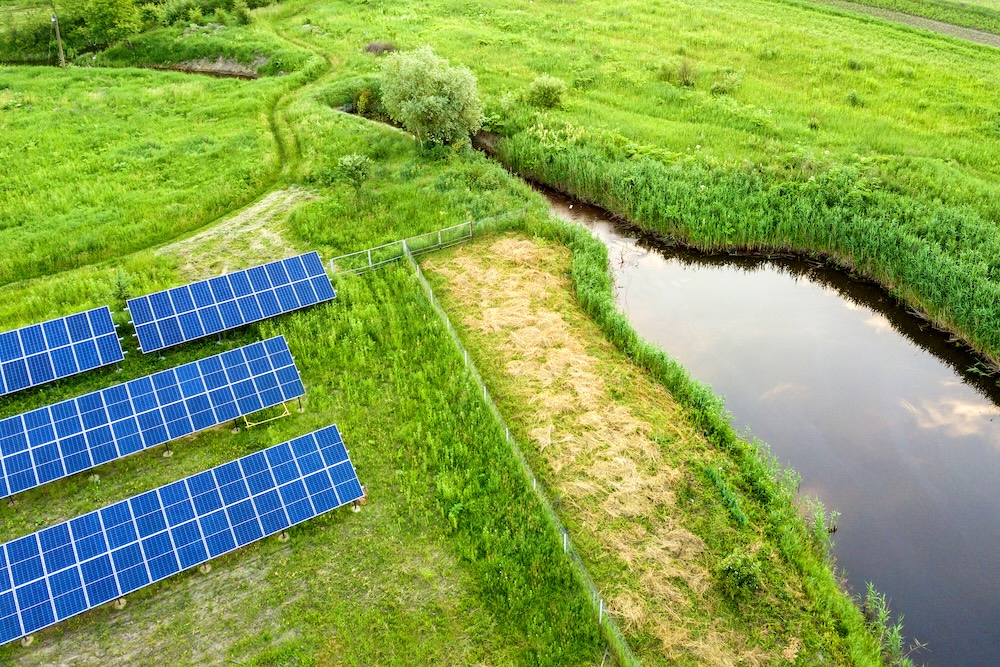As more homeowners embrace off-grid living or strive for energy independence, the need to power essential water systems—without relying on the grid—has never been greater. Whether you’re collecting rainwater, drawing from a well, or generating water from the air using an Atmospheric Water Generator (AWG), solar power offers a sustainable and reliable energy source to keep your system running.
This guide walks you through how to pair solar power with water systems like AWGs, pumps, and filtration devices. From energy calculations to equipment needs and real-world examples, we’ll help you build an efficient off-grid water solution powered entirely by the sun.
1. Why Use Solar Power for Water Systems?
Benefits of Solar-Powered Water Systems:
- Off-Grid Capability: Essential for remote homes or cabins without municipal access.
- Cost Savings: After the initial investment, solar energy is free.
- Eco-Friendly: Zero emissions, no fuel dependency, and reduced carbon footprint.
- Disaster Resilience: Keeps water flowing during grid outages.
Water systems that benefit from solar:
- Atmospheric Water Generators (AWGs)
- Well pumps (submersible or surface)
- Filtration and purification systems (UV, RO, sediment filters)
- Pressure boosting and storage tank refills
2. Understanding Energy Needs for Water Systems
Different water systems require different power levels. Before sizing your solar setup, you must understand your daily energy demand.
Common Energy Requirements:
- AWGs: 200–600 Wh per liter of water produced
- Well Pumps: 500–1,500 watts (varies by depth and flow rate)
- UV Purifiers: 10–40 watts
- Reverse Osmosis (RO): 50–120 watts
Example: A family using an AWG that produces 30 liters/day at 400 Wh/L would need 12 kWh/day, plus additional capacity for pumps and filters.
3. Sizing a Solar Power System for Water Needs
Step-by-Step:
- Calculate Daily kWh Use: Add up wattage of all water-related devices × hours used.
- Check Sunlight Availability: Use your location’s average sun hours per day (e.g., 5 hrs).
- Estimate Panel Needs:
- Example: 12 kWh/day ÷ 5 sun hours = 2.4 kW needed
- Using 400W panels → 2.4 kW ÷ 0.4 kW = 6 panels minimum
- Add Battery Storage:
- Enough to cover 1–3 days of usage
- Consider lithium-ion or deep-cycle AGM batteries
Key Components:
- Solar panels (mono or polycrystalline)
- Inverter (DC to AC conversion)
- MPPT charge controller
- Battery bank
4. Integrating Solar with Atmospheric Water Generators
AWGs are energy-intensive but pair well with solar in humid, sunny regions.
Tips:
- Choose solar-compatible AWGs with lower consumption
- Run during peak sunlight hours for max efficiency
- Use storage tanks to offset fluctuations in solar power
Use Case:
A family of four in Florida installs an AWG with a 12 kWh/day draw. With 10 solar panels (400W each) and a 20 kWh battery bank, they generate and store enough power for continuous operation—even on cloudy days.
5. Powering Well Pumps and Filtration Systems
Solar-Powered Well Pumps:
- DC Pumps: More efficient and easier to integrate
- AC Pumps: Require an inverter but work well with solar
- Use pressure tanks to regulate flow without constant power
Filtration:
- UV purifiers and RO units consume minimal power
- Combine with timers or smart switches to run only when needed
Redundancy:
- Include a manual hand pump or backup generator for emergencies
6. Cost Breakdown: Solar for Water Systems
| Component | Estimated Cost Range |
|---|---|
| Solar panels (6–12 units) | $3,000–$6,000 |
| Battery bank | $2,000–$5,000 |
| Inverter & controller | $500–$1,500 |
| Installation (optional) | $1,000–$3,000 |
Total system costs can range from $6,000 to $15,000+, depending on capacity and complexity. While this may seem steep, the return comes in the form of years of free, off-grid water and energy.
7. Benefits and Limitations
Pros:
- Self-sustaining and silent operation
- Ideal for remote or disaster-prone areas
- Lower long-term operating costs
Cons:
- High upfront investment
- Performance tied to weather and seasonality
- Requires maintenance and monitoring
8. Smart Integration Tips
- Use energy-efficient water systems to reduce load
- Run pumps and AWGs during daylight to avoid battery drain
- Monitor power use with smart inverters or apps
- Set up auto-shutoffs or timers to manage energy flow
9. DIY vs. Professional Installation
DIY Makes Sense If:
- You’re powering only a few low-wattage devices
- You have basic electrical and solar setup knowledge
Hire a Pro If:
- You’re powering a whole-home water system
- You need code-compliant installations
- Your system involves complex battery and inverter setup
10. Who Should Consider Solar Water Power?
- Off-grid homeowners building long-term sustainability
- Homesteaders growing food and livestock
- Preppers looking for disaster resilience
- Eco-conscious households reducing carbon footprints
- Remote cabins and tiny homes with limited infrastructure
Final Thoughts
Pairing solar power with your water system is more than just a smart idea—it’s a critical step toward full home independence. Whether you’re using an AWG, a deep-well pump, or a high-efficiency filter, solar allows you to run these systems sustainably and without interruption.
Plan your energy needs carefully, invest in quality components, and consider professional help for complex installations. With the sun on your side, clean, reliable water is always within reach—no matter where you live.
Shop atmospheric water generators that make water from air
FAQs
Can I power a full-home water system with solar?
Yes, with proper sizing of your solar array and battery bank, you can run AWGs, pumps, and filters entirely on solar.
How many panels do I need for an AWG?
It depends on water output and your AWG’s efficiency. Typically, 6–10 high-wattage panels are needed for daily family use.
Is solar cheaper than running a generator for water?
Over time, yes. While generators have lower upfront costs, they require ongoing fuel and maintenance.
Can I add solar to an existing water system?
Yes. You can retrofit existing systems with solar-compatible pumps, filters, and battery support. It’s best to consult an installer for compatibility.









Reader Interactions